For thousands of years, holy basil has been used in recipes to reduce stress, boost immunity, promote better sleep, and enhance overall health and well-being.
I first discovered holy basil (also known as tulsi) at the same time I also found ashwagandha, both are ingredients in an ashwagandha tulsi tea that I tried. I discussed tea previously in another World of Adaptogen blog series article, you can read it here: Ashwagandha: Benefits, Uses, and Recipes.
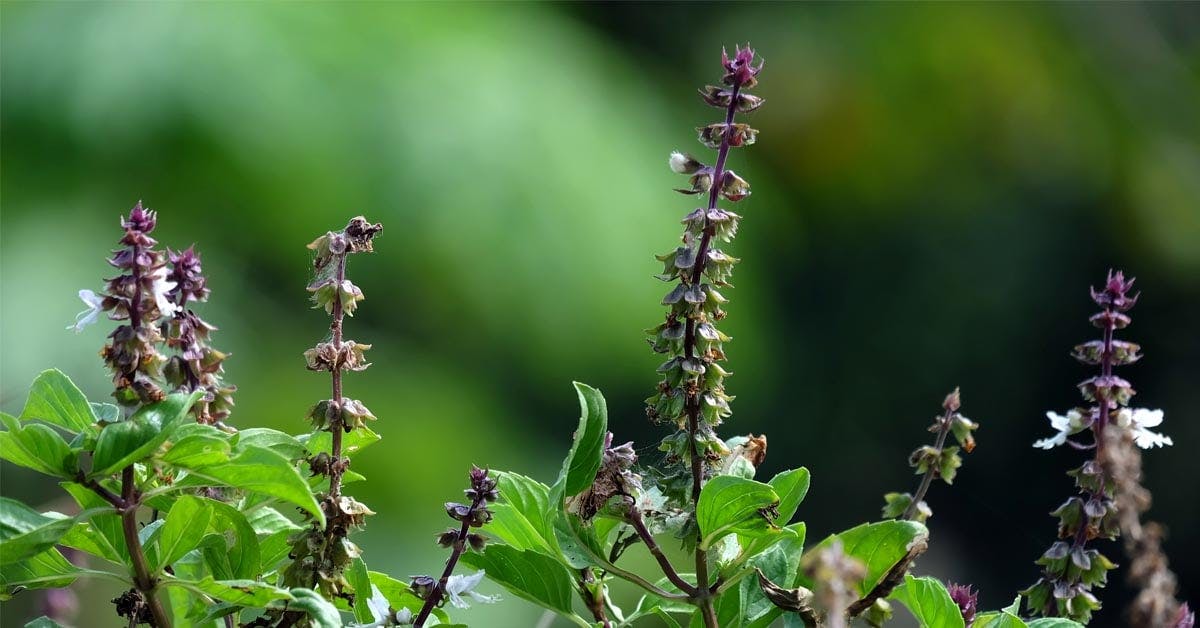
A short time after I started taking daily doses of both ashwagandha and holy basil extracts, I noticed a great improvement in my body’s performance and general health. Because this has been so beneficial for me, I am excited to share more about what holy basil does, what it is used for, and ideas for how you can work it into your daily regimen!
Use these links to jump to different sections of the article:
- What is Holy Basil?
- Health Benefits of Holy Basil
- How to Grow Holy Basil
- Where to Buy Holy Basil
- How to Use Holy Basil
- Side Effects of Holy Basil
- Holy Basil Recipes
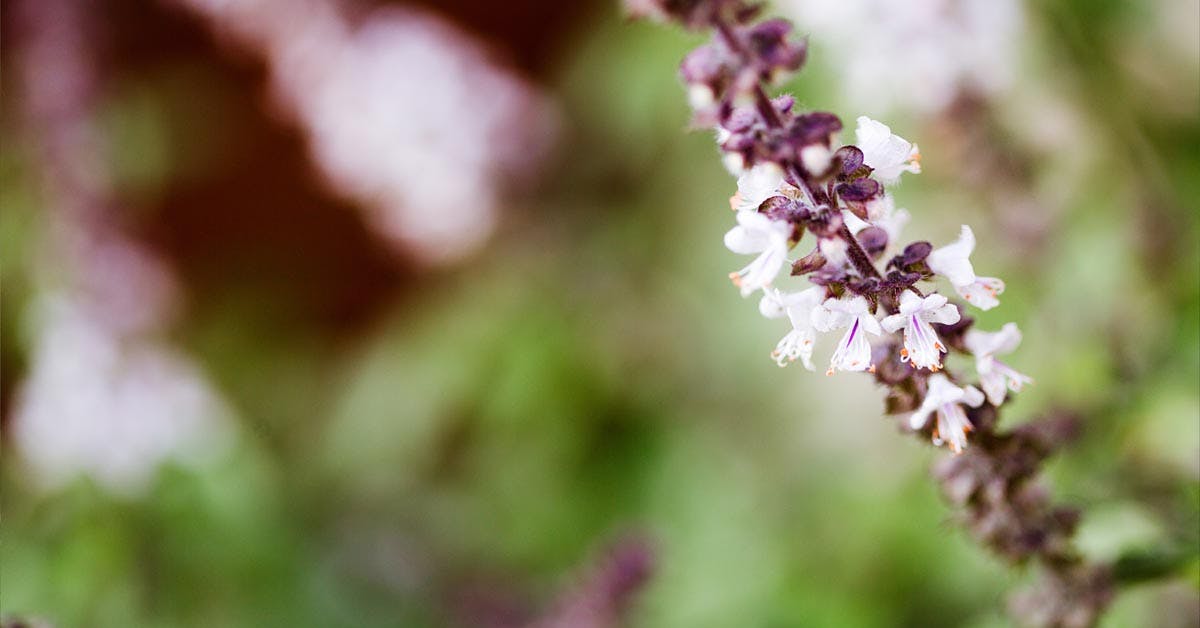
What Is Holy Basil?
Holy basil (Ocimum tenuiflorum), is an aromatic flowering plant of the mint family that is native to India, found throughout Southeastern Asia. It is not the sweet basil leaves you put on your margarita pizza, or the Thai basil herb you use to garnish your pho! It is a different plant that is grown for religious purposes, essential oils, and its medicinal qualities as an adaptogen.
Within Ayurveda, tulsi is known as “The Incomparable One,” “Mother Medicine of Nature” and “The Queen of Herbs,” and is revered as an “elixir of life” that is without equal for both its medicinal and spiritual properties.1 Ayurveda is one of India’s traditional health care systems and one of the oldest medical systems in the world. Taking a holistic approach to health, Ayurveda encourages regular consumption of adaptogenic herbs that enhance the body’s capacity to maintain balance while being exposed to a range of stressors.
In the Hindu religion, tusli is a sacred plant, as it is believed to be the personification of the goddess Tulasi. This is why holy basil is sometimes referred to as tulasi, or tulsi.2 The tulasi plant is regarded as the holiest of all plants, and is seen as a threshold point between heaven and earth. For this reason, it is grown next to Hindu temples and houses and is often worshiped twice a day (morning and night).
Health Benefits of Holy Basil
Cognitive Booster
Supplements that improve cognitive function are referred to as nootropics. Holy basil is considered a very powerful, herbal nootropic because of its positive effects on cognitive functions such as memory, focus, creativity, and motivation.
Calming + Antidepressant
Holy basil has been successfully used to relieve mental fog, cloudy thinking, poor memory, attention deficit disorder (ADD) and attention deficit hyperactivity disorder (ADHD), and mild depression.3 Studies have shown that combining botanical nootropics has helped those with moodiness and chronic depression. Holy basil is a stress relieving adaptogen, reported to improve general stress scores, and therefore promotes calm and clear thinking.
“Like yoga, tulsi has a calming effect that leads to clarity of thought, along with a more relaxed and calm disposition.” – Prof Marc Cohen, RMIT University, MBBS, PhD, BMedSc
Anti-Inflammatory
Tulsi (holy basil) exerts anti-inflammatory effects comparable to nonsteroidal anti-inflammatory drugs such as phenylbutazone, ibuprofen, naproxen, aspirin and indomethacin.4 The clinical effects demonstrated in studies suggest tulsi may have an important role in addressing other inflammatory disorders and that the Ayurvedic tradition of consuming tulsi on a daily basis may be an effective lifestyle measure to address many modern chronic diseases.5
Blood Pressure + Blood Sugar
The findings from 24 human studies published (as of 2017), suggest that tulsi is a safe herbal intervention that may assist in normalizing glucose (blood sugar) and blood pressure, along with dealing with psychological and immunological stress.5
Immune System Support
In clinical studies, enhanced immune response and improved immune functions were reported. This included symptomatic improvements for those already with viral infections.5 Tulsi has also been shown to boost defenses against infective threats by enhancing immune responses in animals and healthy humans.4
Diabetes + Cholesterol
In studies, holy basil has been found to decrease cholesterol levels in a short amount of time.5 This powerful herb has also been used to manage diabetes as it has a positive effect on people with diabetes, lowering their blood glucose and cholesterol levels.
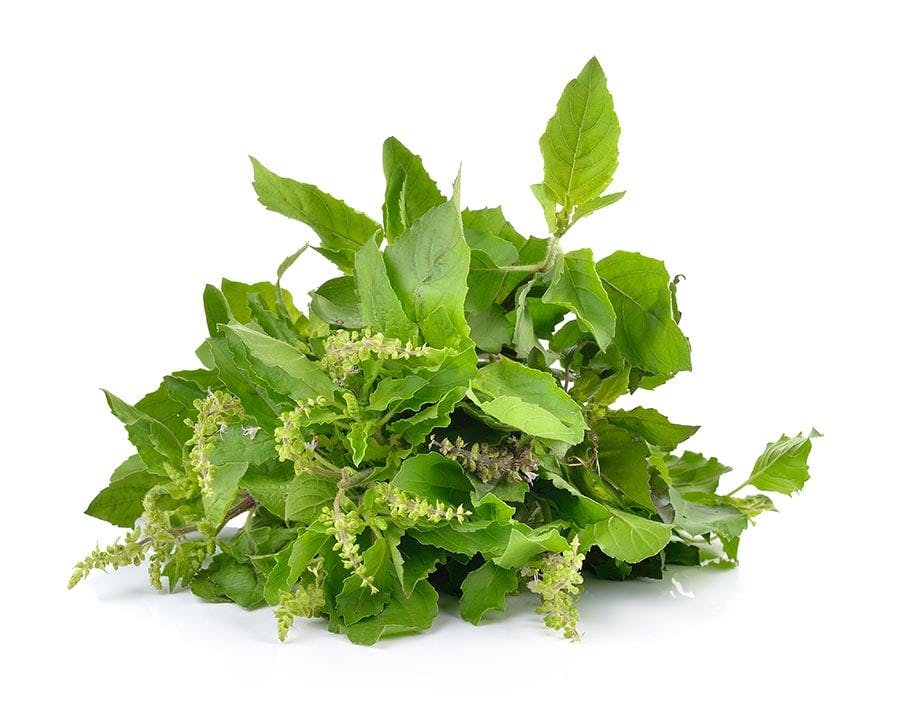
How to Grow Holy Basil
If you live in a warmer climate, zones 10 to 11, you may want to try your hand at growing holy basil from herb seeds in your outdoor garden. Holy basil loves full sun and it will come back every year if you live in the aforementioned zones. It makes a great addition to your herb garden and can even be grown in a pot for use indoors or outdoors, which makes it suitable for apartment or tiny home gardens.
- Start the seeds indoors 6-8 weeks before the end of the frost season. Use a good seed starter soil and cover the seeds with ¼” of the soil.
- Keep the soil moist but not saturated until germination occurs.
- Once the leaves appear, fertilize every other week.
- When transplanting outside, allow about 6” between plants.
Where to Buy Holy Basil
Since I live in Buffalo, New York, where we average about 155 sunny days per year, I find it easiest to purchase my holy basil instead of growing it.
I take a daily dose of holy basil extract and drink tulsi green and tulsi ashwagandha tea every day.
Some of my favorite sources for holy basil are:
As an Amazon Associate, Goodnature earns from qualifying purchases, at no added cost to you.
How to Use Holy Basil
Traditionally, holy basil (tulsi) was made into essential oil or dried for tea. Today, adding to juice, smoothies, and snacks are some of the best ways to incorporate this adaptogen into your daily life. It is available in whole form (fresh or dried), powder, and extract form.
Form | Works well with... |
Powders | smoothies, smoothie bowls, plant-based milks, raw snack bars, baked goods, nut butters |
Extracts | juices, smoothies, plant-based milks, most applications |
Whole | tea |
Holy basil is intensely spicy, with flavors of black pepper and clove. I personally like the way it tastes, but I am the kind of person that loves black licorice, fennel, anise, clove, and chai flavors. When mixed in with green tea, like Organic India’s Tusli Green tea, it has a more subtle taste and complements the flavors perfectly (my absolute favorite green tea out there).
Possible Side Effects
If you are pregnant or trying to get pregnant, you may want to avoid consuming holy basil. Some studies have shown tulsi to have antifertility properties, affecting the male reproductive system.6 Other contradictory animal studies have shown that holy basil may be toxic to embryos.
Holy Basil Juice Recipe
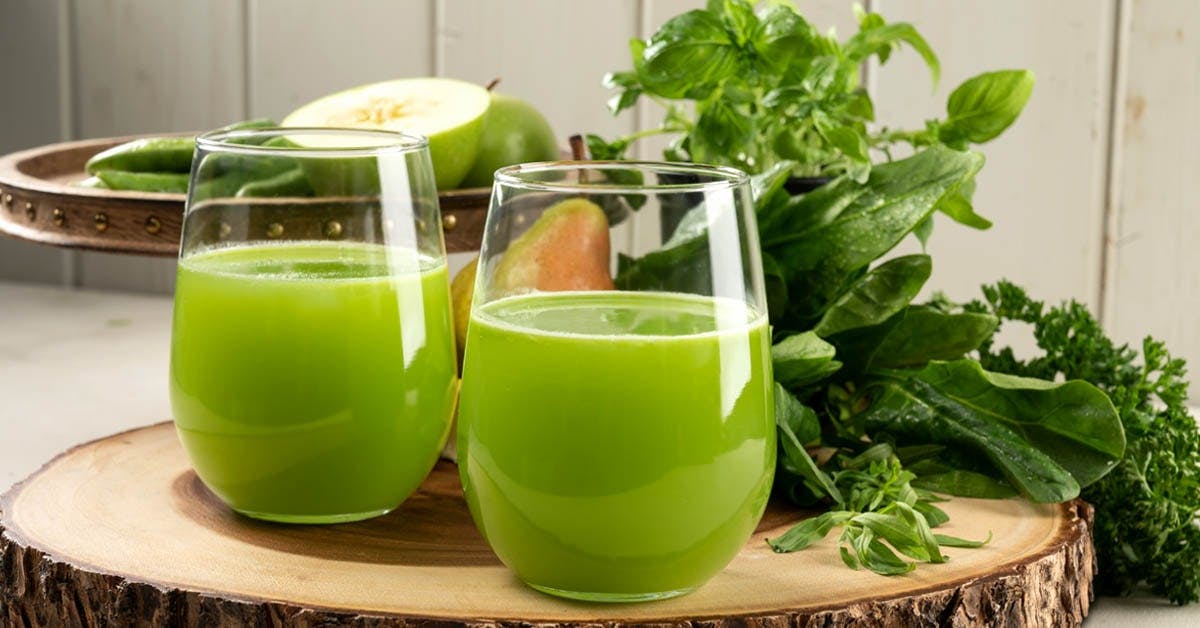
Typically holy basil is made into a tea, commonly known as tulsi tea. Luckily, we have Chef Ari to help come up with amazing recipes and he created a light and refreshing green juice featuring holy basil with other fine herbs. Get the full holy basil juice recipe on our recipe archive.
Holy Basil & Herb Green Juice Recipe
- Yield: About one 12 oz serving
Ingredients:
- Holy basil leaf extract – 0.5 ml (1 serving)
- Pear – 8.7 oz (1 1/2 medium pear)
- Green apple – 7.7 oz (1 1/4 medium pear)
- Snap pea – 3.3 oz (12 snap peas)
- Spinach – 1.6 oz (1 1/2 cups spinach)
- Parsley – 0.33 oz (about 1/4 cup chopped parsley)
- Basil – 0.27 oz (about 9 leaves)
- Lemon – 0.29 oz (1/8 lemon)
- Tarragon – 0.1 oz (1 large pinch tarragon)
Directions:
- Wash and weigh the produce.
- Quarter the lemon (leaving skin on) and place directly into the press. If you don’t have a juice press, peel the lemon and juice with the rest of the ingredients.
- Grind remaining ingredients, including the herb stems, and press.
- Add the holy basil leaf extract to the juice and mix.
Other Articles in This Series
The World of Adaptogens Blog Series
- Introduction to Adaptogens
- Chaga Mushroom: Benefits, Uses & Recipes
- Ashwagandha: Benefits, Uses & Recipes
- Reishi: Benefits, Uses & Recipes
References
- Singh, N., Hoette, Y., & Miller, D. R. (2002). Tulsi: The mother medicine of nature. International Institute of Herbal Medicine.
- Littleton, C. Scott; Marshal Cavendish Corporation (2005). Gods, Goddesses, And Mythology, Volume 11. Marshall Cavendish. pp. 1124–26. ISBN 9780761475590.
- Ayales, Adriana (2019) Adaptogens, Herbs for Longevity and Everyday Wellness. Sterling Publishing Co., Inc.
- Cohen, Marc M. (2014). Tulsi – Ocimum sanctum: A herb for all reasons. J Ayurveda Integr Med
- Jamshidi, Negar & Cohen, Mark M. (2017) The Clinical Efficacy and Safety of Tulsi in Humans: A Systematic Review of the Literature PMID: 28400848
- Sethi, J., Yadav, M., Sood, S., Dahiya, K., & Singh, V. (2010). Effect of tulsi on sperm count and reproductive hormones in amle albino rabbits PMID: 21455446
The information shared in this post is a combination of my personal experience, research, and knowledge as a certified holistic health coach, and is intended for educational purposes only. These statements have not been evaluated by the FDA and are not intended to diagnose, treat, cure, or prevent any disease or to be considered a substitute for professional medical advice.
Comments
thanks for the information
Can I get the Holy Ba
sil in a pill form like the Ashwagandha? Im a Diabetic and I need Help? Can you Assist me in any way, Please!
Hi Dawn!
Yes you can find the holy basil capsules on Amazon here: https://amzn.to/3hbBeuJ 😄
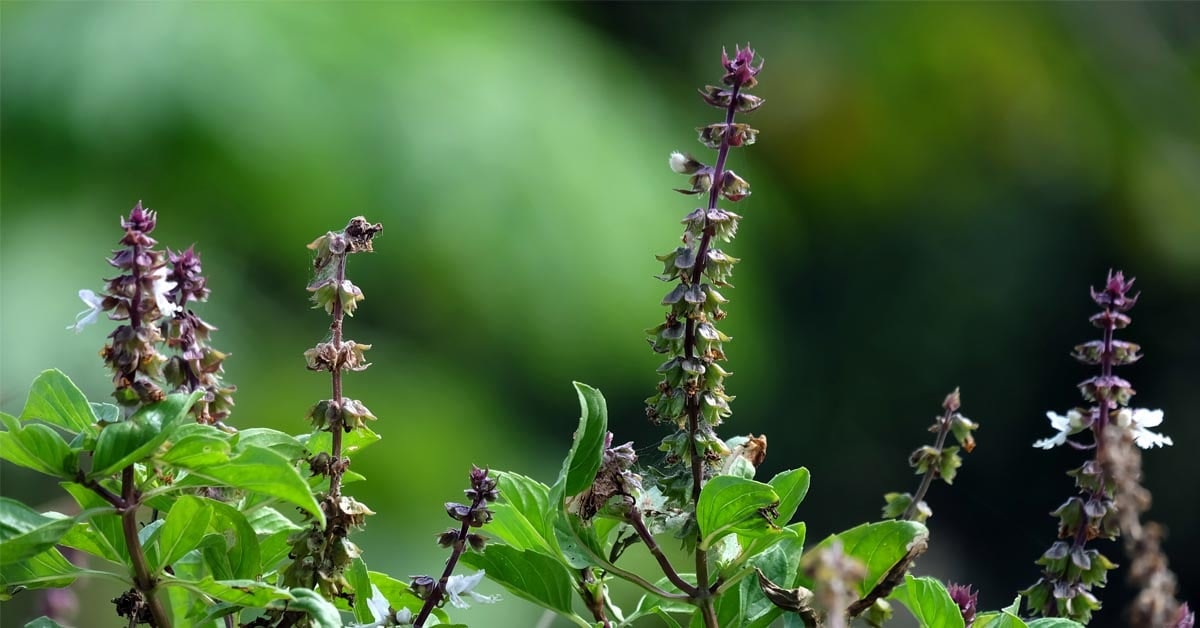

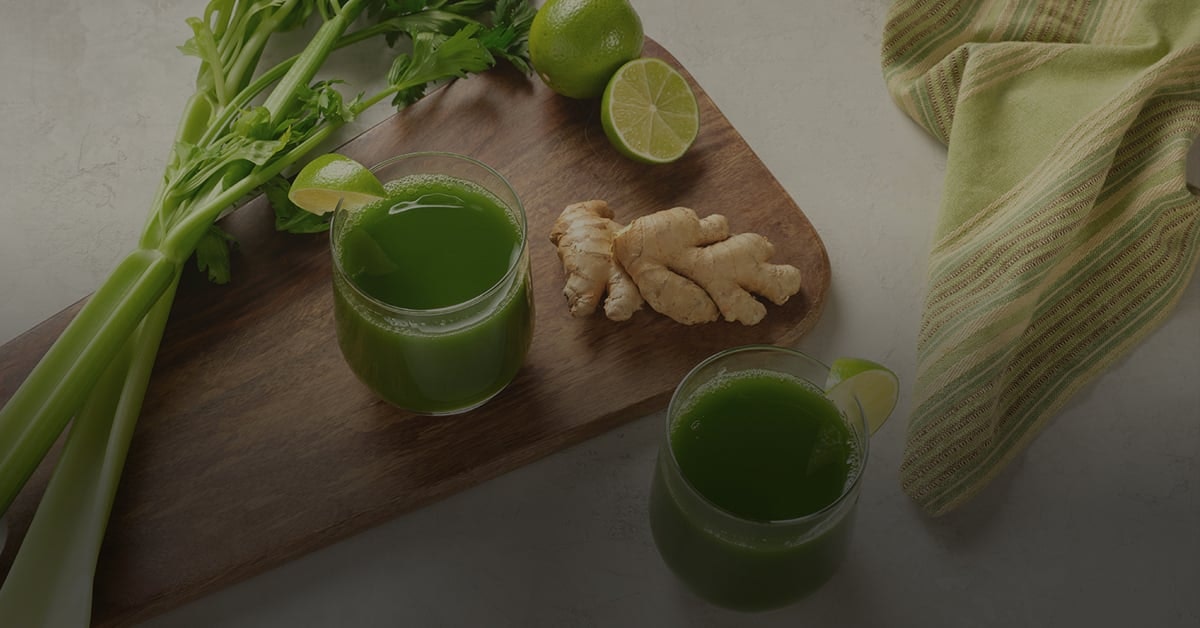

Comment